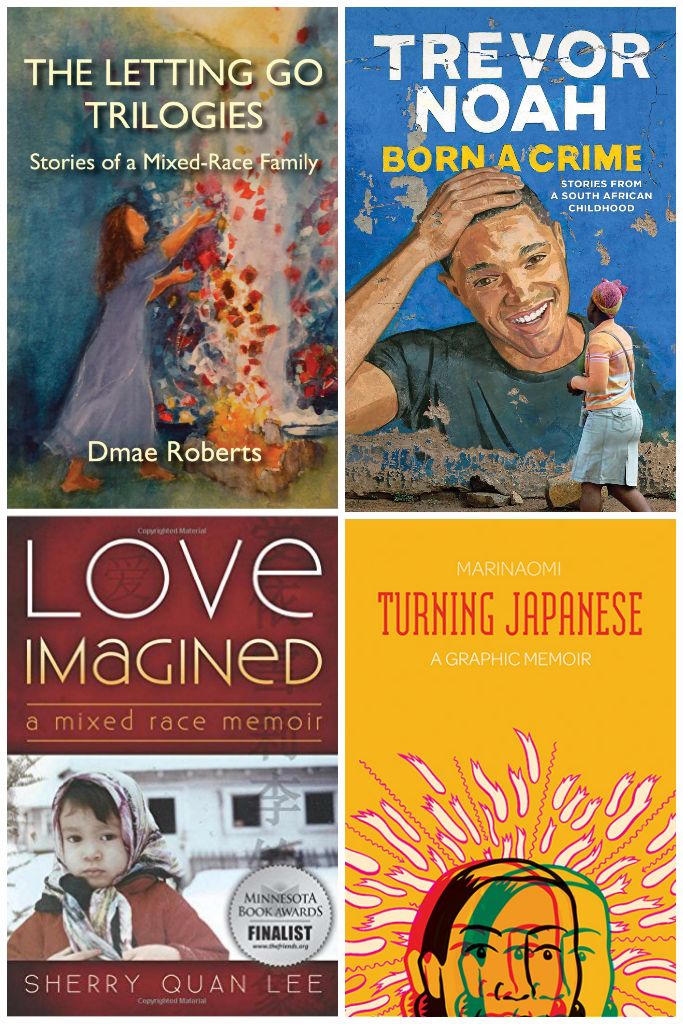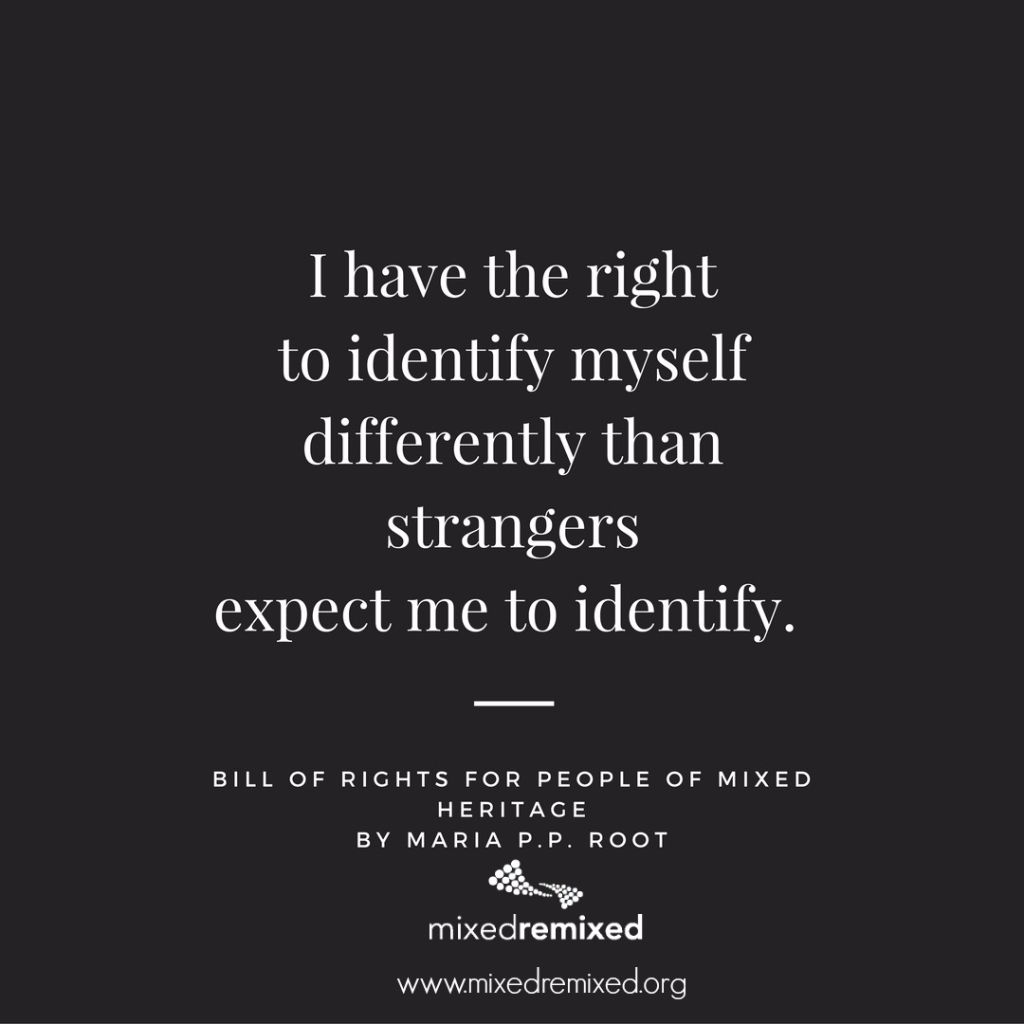5 Things That Will Make You Feel Like You Can Embrace a Mixed Race or Biracial Identity
1. Recognize that your psychic health may require self-acceptance of your mixed race and multiracial identity.
A study published in 2015 in Current Directions in Psychological Science by Sarah Gaither found that multiracial children who are “raised to identify with both parents and to understand their complex racial heritage [can] have higher self-esteem than mono-racial people. They are adaptable, able to function well in both majority and minority environments. They are more likely to reject the conception that race biologically predicts one’s abilities, which may, in turn, insulate them from the negative impact of racism or bias.” Source: New York Magazine.
2. Learn about historical figures who were mixed.
 One of the things that helped me start to accept the fact that I could not hide from my complicated cultural and racial identity was learning about other mixed-race people of the past. For me, Nella Larsen who also wrote about being black and Danish (like me) back in the 1920s became an important figure. I saw her bravery about talking about being mixed in a racially divided world as a kind of permission. It’s important to feel like you have a history. Seek out mixed historical figures. Here’s one fun resource in The Mixed Experience History Month.
One of the things that helped me start to accept the fact that I could not hide from my complicated cultural and racial identity was learning about other mixed-race people of the past. For me, Nella Larsen who also wrote about being black and Danish (like me) back in the 1920s became an important figure. I saw her bravery about talking about being mixed in a racially divided world as a kind of permission. It’s important to feel like you have a history. Seek out mixed historical figures. Here’s one fun resource in The Mixed Experience History Month.3. Read books about biracial people (fiction and non-fiction).
 There is an ever-growing literature about biracial and mixed-race characters and people. Read those stories and find yourself! We have a couple of resources here if you’re looking for memoirs or kids’ books. The Mixed Remixed Festival also has its own on-line book club. You should join us and read some great books!
There is an ever-growing literature about biracial and mixed-race characters and people. Read those stories and find yourself! We have a couple of resources here if you’re looking for memoirs or kids’ books. The Mixed Remixed Festival also has its own on-line book club. You should join us and read some great books!4. Watch films featuring biracial and mixed race characters.
 Ditto films! It’s an amazing experience to be in a theater and see families that look like your own like the wonderful film, Loving, and now more recently A United Kingdom. Heck, you can find our stories on Netflix too. Stream one now!
Ditto films! It’s an amazing experience to be in a theater and see families that look like your own like the wonderful film, Loving, and now more recently A United Kingdom. Heck, you can find our stories on Netflix too. Stream one now! 5. Connect on-line and in-person with other mixed race and biracial people.
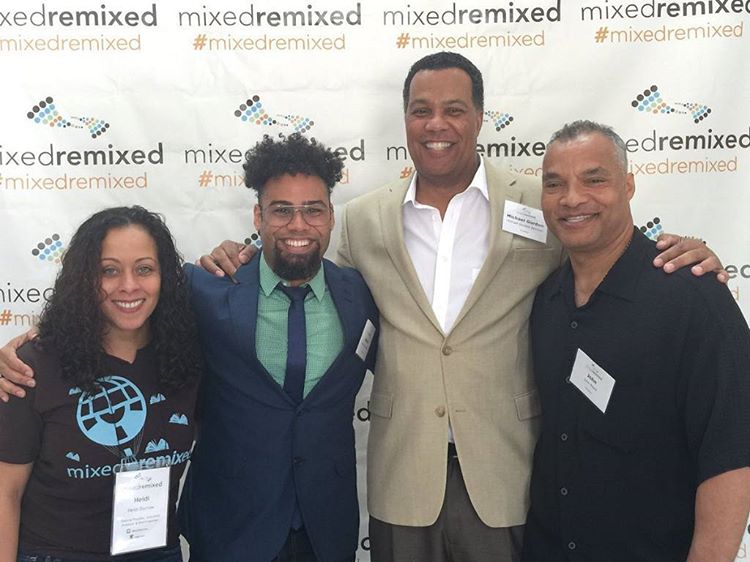 It’s been so amazing to connect with other mixed folks and families on line in various Facebook groups and on Twitter and Instagram. Our favorite way to connect though is the Mixed Remixed Festival. It’s the largest nationwide gathering of mixed families and people held each year in June. You should join us! It’s free!
It’s been so amazing to connect with other mixed folks and families on line in various Facebook groups and on Twitter and Instagram. Our favorite way to connect though is the Mixed Remixed Festival. It’s the largest nationwide gathering of mixed families and people held each year in June. You should join us! It’s free! 3 Clever Tools to Simplify Your Curly Hair Days
3 Clever Tools to Simplify Your Curly Hair Days
Some days I wonder why people use the term “naturally curly” when talking about my hair. I have been in a life-long search to figure out how to make my naturally curly hair look curly. These are some of the tools that have helped me on my curly hair days.
1. Mixed Chicks Hair Products
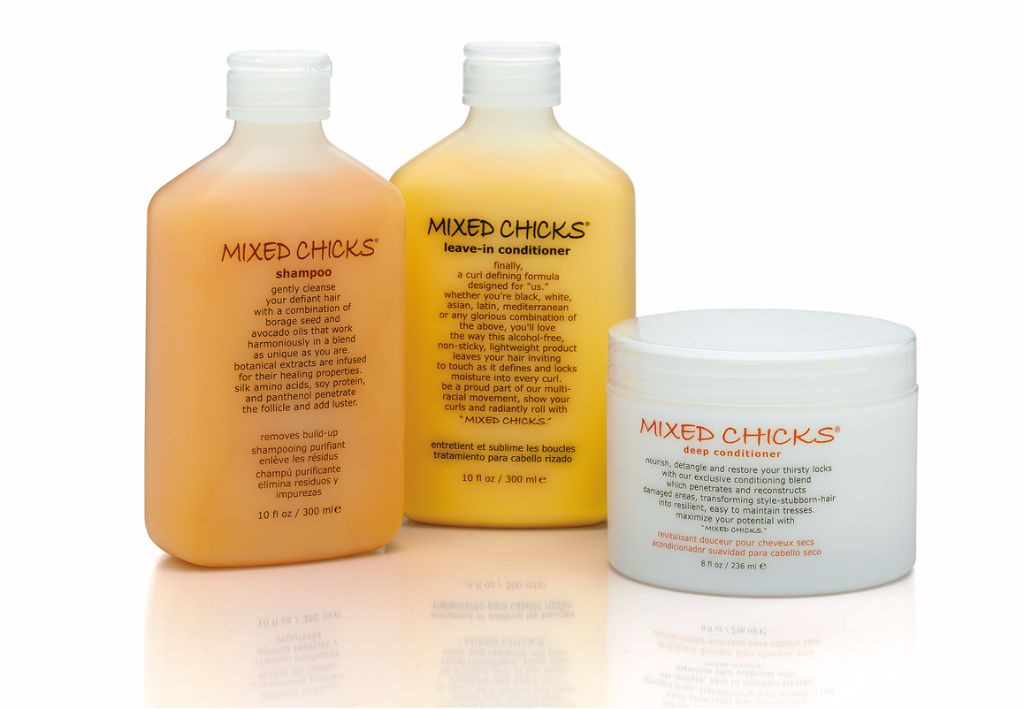 Mixed Chicks Hair Products have worked wonders on my hair. The products define my curls without weighing them down. And the product doesn’t flake off like other products can. My favorite product is the leave-in conditioner, but check out the whole line of shampoos, conditioners, and now hair brushes and hair accessories too!
Mixed Chicks Hair Products have worked wonders on my hair. The products define my curls without weighing them down. And the product doesn’t flake off like other products can. My favorite product is the leave-in conditioner, but check out the whole line of shampoos, conditioners, and now hair brushes and hair accessories too!2. Fast-drying hair towel
 If you have long, thick curly hair, a fast-drying hair towel is a real life saver. In the past, my hair has been damp up to five hours after I’ve washed it. And maybe you too have experienced that ring around the shoulders of a tshirt when your hair was still wet? Your curls will dry happily in a fast-drying hair towel without getting smushed. Try it.
If you have long, thick curly hair, a fast-drying hair towel is a real life saver. In the past, my hair has been damp up to five hours after I’ve washed it. And maybe you too have experienced that ring around the shoulders of a tshirt when your hair was still wet? Your curls will dry happily in a fast-drying hair towel without getting smushed. Try it.
3. Lavender Water in Spray Bottle
Join us for the largest gathering of multiracial and mixed-race families and people in June 2017 for the 4th Annual Mixed Remixed Festival.
3 Trends You Need to Know About How to Talk About Mixed-ness, Mixed Race and Multiracial Experience and Identity
Sometimes it feels like the needle is not moving fast enough on the conversation about mixed-race and multiracial identity and experience. But if we take a moment to take a look at the conversations that we’re having today, there are some changes happening in the way that people are talking. Here are 3 trends you should know about if you’re talking about mixed-ness these days:
Intersectionality
Legal scholar Kimberle Crenshaw provides a very good explanation of what intersectionality is about in this essay. (See also her 2016 TED Talk.) She’s not writing about mixed-race issues in particular but the ideas still apply.
“Intersectionality is an analytic sensibility, a way of thinking about identity and its relationship to power. Originally articulated on behalf of black women, the term broug ht to light the invisibility of many constituents within groups that claim them as members, but often fail to represent them. Intersectional erasures are not exclusive to black women. People of color within LGBTQ movements; girls of color in the fight against the school-to-prison pipeline; women within immigration movements; trans women within feminist movements; and people with disabilities fighting police abuse — all face vulnerabilities that reflect the intersections of racism, sexism, class oppression, transphobia, able-ism and more. Intersectionality has given many advocates a way to frame their circumstances and to fight for their visibility and inclusion.” Kimberle Crenshaw
ht to light the invisibility of many constituents within groups that claim them as members, but often fail to represent them. Intersectional erasures are not exclusive to black women. People of color within LGBTQ movements; girls of color in the fight against the school-to-prison pipeline; women within immigration movements; trans women within feminist movements; and people with disabilities fighting police abuse — all face vulnerabilities that reflect the intersections of racism, sexism, class oppression, transphobia, able-ism and more. Intersectionality has given many advocates a way to frame their circumstances and to fight for their visibility and inclusion.” Kimberle Crenshaw
Multi-Generationally Mixed (MGM)
 More people are connecting with their mixed backgrounds. That means people who felt like they didn’t have permission before are claiming a heritage that had been denied them before. Many of those people are “multigenerationally mixed” — a kind of remix of mixing. NPR’s Leah Donella wrote a really great piece about this changing landscape and terminology for mixed-ness. You can read it here: All Mixed Up: What Do We Call People Of Multiple Backgrounds?
More people are connecting with their mixed backgrounds. That means people who felt like they didn’t have permission before are claiming a heritage that had been denied them before. Many of those people are “multigenerationally mixed” — a kind of remix of mixing. NPR’s Leah Donella wrote a really great piece about this changing landscape and terminology for mixed-ness. You can read it here: All Mixed Up: What Do We Call People Of Multiple Backgrounds?
Reclaiming the Word “Mulatto”
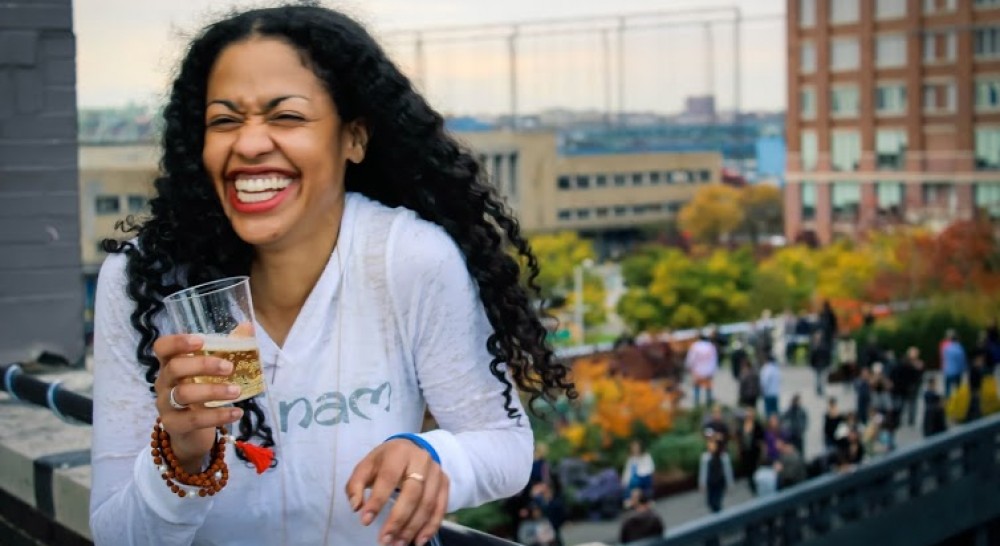 There is a lot of discussion about this word that many consider perjorative. But there are many thought leaders in the mixed race community who are eager to reclaim it in the same way that the LGBTQ movement reclaimed the word queer. I myself am sometimes one of these people when I jokingly refer to myself as a professional mulatto. You can check out the wonderful work of Tiffany Jones of the Mulatto Diaries (still relevant now a couple of years later). And definitely make sure that you read Mat Johnson’s defense of the word mulatto here: Why You Can Kiss My Mulatto Ass
There is a lot of discussion about this word that many consider perjorative. But there are many thought leaders in the mixed race community who are eager to reclaim it in the same way that the LGBTQ movement reclaimed the word queer. I myself am sometimes one of these people when I jokingly refer to myself as a professional mulatto. You can check out the wonderful work of Tiffany Jones of the Mulatto Diaries (still relevant now a couple of years later). And definitely make sure that you read Mat Johnson’s defense of the word mulatto here: Why You Can Kiss My Mulatto Ass
 “Yo, I’m a mulatto. And I have to tell you, it’s great. I was black for most of my life, which is also great, but the thing is I look white and, coincidentally, my dad’s also white (he’s great too), and after a while I needed a word that offered me a better fit, and acknowledge my father and his whole family’s impact on my life, which was also a big part of my identity. So I converted to mulatto, which I see as a subset of the larger African American experience. I actually love the word mulatto.” – Mat Johnson
“Yo, I’m a mulatto. And I have to tell you, it’s great. I was black for most of my life, which is also great, but the thing is I look white and, coincidentally, my dad’s also white (he’s great too), and after a while I needed a word that offered me a better fit, and acknowledge my father and his whole family’s impact on my life, which was also a big part of my identity. So I converted to mulatto, which I see as a subset of the larger African American experience. I actually love the word mulatto.” – Mat Johnson
5 Surprising Facts About Racial Categories on the Census
In 2020–and it’s really right around the corner–the U.S. Census will be taken again to give us a portrait of America. Some people may not realize that the racial categories that seem so “fixed” in American discussions of race have been fluid on paper and in the government’s eyes since the beginning. Here are 5 surprising facts about racial categories on the Census and how America has “counted” race since its beginning.
- The term “Negro” will be dropped for the 2020 Census. Source: NPR “No More ‘Negro’ For Census Bureau Forms And Surveys” February 25, 2013 Tanya Ballard Brown
- Starting in 1960, Americans could choose their own race on the Census. Source: Pew Research Center “Multiracial in America Proud, Diverse and Growing in Numbers” June 11, 2015
- The 2000 Census was the first time Americans could choose more than one racial category. Source: Pew Research Center “Multiracial in America Proud, Diverse and Growing in Numbers” June 11, 2015
- The 1790 Census counted these racial categories: “Free White Males, Free White Females”; “All Other Free Persons” (by color); “Slaves”. Source: Pew Research Center Race and the Census: The “Negro” Controversy by D’Vera Cohn January 21, 2010

- In 1910, the Census used “Mu” for mulatto and “Ot” for octoroon for a data item called “color or race.” According to that year’s Census: “For census purposes, the term ‘‘black’’ (B) includes all persons who are evidently full blooded negroes, while the term ‘‘mulatto’’ (Mu) includes all other persons having some proportion or perceptible trace of negro blood.” Source: Pew Research Center Race and the Census: The “Negro” Controversy by D’Vera Cohn January 21, 2010
5 Stunning Photo Books of Mixed People, Families and Interracial Couples
 We think it’s always important to have media images that show positive representations of mixed-race and multiracial people and families. These are some of the large format photo and portrait books that we’ve loved over the years. Learn more about them.
We think it’s always important to have media images that show positive representations of mixed-race and multiracial people and families. These are some of the large format photo and portrait books that we’ve loved over the years. Learn more about them.
No Difference Betwen Them, Robert Kalman. Here is the easiest way to describe this lovely book of portraits. “Robert Kalman’s extraordinary portraits of interracial couples in No Difference Between Them show us what love looks like. It’s not contrast but connect ion that he has captured. Kalman meets the shared gaze of each couple with warmth. And whether they hold onto each other or not, the couples look like they belong together. Kalman’s photographs witness their bond. No Difference Between Them is an essential record of what human connection looks like. And Kalman has done it with great skill and clearly great love.” — Heidi W. Durrow
ion that he has captured. Kalman meets the shared gaze of each couple with warmth. And whether they hold onto each other or not, the couples look like they belong together. Kalman’s photographs witness their bond. No Difference Between Them is an essential record of what human connection looks like. And Kalman has done it with great skill and clearly great love.” — Heidi W. Durrow
 Part Asian, 100% Hapa, Kip Fulbeck This beautiful photo book has become a staple of mixed race studies and a must-have for all multiracial families. The photos are part of a traveling exhibit that has toured across the country a few times and always generates wonderful conversation. You will love this collection of portraits and the insights into how we see ourselves through the subjects’ eyes.
Part Asian, 100% Hapa, Kip Fulbeck This beautiful photo book has become a staple of mixed race studies and a must-have for all multiracial families. The photos are part of a traveling exhibit that has toured across the country a few times and always generates wonderful conversation. You will love this collection of portraits and the insights into how we see ourselves through the subjects’ eyes.
 Mixed: Portraits of Multiracial Kids, Kip Fulbeck
Mixed: Portraits of Multiracial Kids, Kip Fulbeck
Fulbeck took his genius to a new project that focused exclusively on kids. It’s not just a collection of cute “mixed-race” kids; the book also collects their thoughts on race and identity in their own words. There is a lot of wisdom from these young kids.
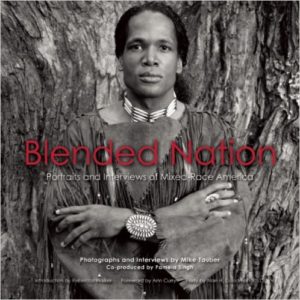 Blended Nation: Portraits and Interviews of Mixed Race Americans, Mike Tauber
Blended Nation: Portraits and Interviews of Mixed Race Americans, Mike Tauber
Mike Tauber is a super-talented photographer and he has captured great portraits of mixed-race individuals as well as their stories in this large-format coffee table book. This would make a great gift!
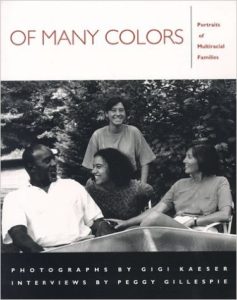 Of Many Colors: Portraits of Multiracial Families, Gigi Kaeser
Of Many Colors: Portraits of Multiracial Families, Gigi Kaeser
This too was a wonderful traveling exhibit. What is wonderful about this book is that it portrays whole families in a really beautiful way. Here is a description of this book: “Of Many Colors tells the stories of thirty-nine families who have bridged the racial divide through interracial marriage or adoption. In these pages, parents and children speak candidly about their lives, their relationships, and the ways in which they have dealt with issues of race.”
4 More Top Biracial Memoirs
We shared our Top 10 Contemporary Biracial Memoirs with you last year. We realized that there are so many stories that we want to make sure you know about. Here are 4 more Top Biracial Memoirs that you want to put on your to-read list!
The Letting Go Trilogies: Stories of a Mixed-Race Family (2016) by Dmae Roberts
This is a great read! In a series of essays, Roberts tells the story of growing up Taiwanese and white before people talked about being biracial. Her prose is moving and her honesty and insight is often heart breaking. Check it out!
Turning Japanese (2016) by MariNaomi
MariNaomi’s graphic novel tackles the story of how after ending two long-term relationships Naomi learns to deal with her “otherness” to both Japanese and American culture. When she decides to work at a Japanese hostess bar in the Bay Area and then travels “back” to Japan to connect with her family. At turns funny and touching, you’ll love Mari Naomi’s artwork and the heart she puts in her story.
Born a Crime: Growing Up Biracial During Apartheid (2016) by Trevor Noah
The biracial South African-born comedian that took the reins of the Daily Show in 2015 has penned a memoir about the absurdities and difficulties of being mixed race in a country where his birth violated any number of laws, statutes, and regulations. This is not a simple celebrity tell-all, rather, Noah shares deeply personal stories about growing up poor, raised by a single mom who instilled in him a belief that he could rise above the circumstances of his birth. Reviewers have praised this book across the board. Be sure to check it out.
Love Imagined: A Mixed Race Memoir (2014) by Sherry Quan Lee
Sherry Quan Lee has written a fascinating memoir about growing up mixed race (Black and Chinese) in a mostly Scandinavian-American region. She writes about the loneliness and confusion she experienced because of the silence imposed on her family about her racially and culturally complex identity. The memoir is raw, honest, and a really great read.
5 Essential Resources for Parents of Mixed Race and Multiracial Kids
 People often ask us for parenting resources and we’re happy to help. Usually we have done it piecemeal — one email at a time. But we’ve decided we’re going to pull together as much information for you and post it here on the Mixed Remixed Festival blog.
People often ask us for parenting resources and we’re happy to help. Usually we have done it piecemeal — one email at a time. But we’ve decided we’re going to pull together as much information for you and post it here on the Mixed Remixed Festival blog.
Here is just the beginning of the research we’ve done:
5 Essential Resources for Parents of Mixed Race and Multiracial Kids
- Mixed Like Us: 5 Ways to Support Biracial Children at Home and in School by Kimberly Cooper via Huffington Post
Cooper has written widely about this subject and has been active in discussion multiracial experience for decades now. She asks a simple and important question in her article: “But what if mixed-race and biracial children were supported for an identity which embraced both parents?” She then outlines some concrete steps that you can take to make that happen.
 2. Raising Mixed Race: Multiracial Asian Children in a Post-Racial World by Sharon Chang
2. Raising Mixed Race: Multiracial Asian Children in a Post-Racial World by Sharon Chang
This book has received a lot of attention since its publication last year. It’s unique in that it focuses specifically on Asian-American mixed kids, a topic that is often given short-shrift in a country that thinks of race in black and white.
3. 7 Things Your Parents Didn’t Tell You about Raising a Biracial Child by Deidre Anthony via Huffington Post
Anthony is a great blogger to follow and this post is really important because she tells truths you may not be able to accept yet, but you need to hear as the parent of a mixed kid. Make sure you check this out.
4. How to Raise Confident Multiracial Children by Chantilly Patino via Bicultural Familia
The best thing that you can do as a parent of a kid of any polka dot or stripe is raise a confident child–one who is comfortable in his or her own skin. That becomes a challenge often for mixed-race kids who are defined by what they look like more than what their experience may be. This is a great article about how to instill confidence in multiracial kids. And Patino’s blog as a whole is a great resource too!
5. What I wish white moms of biracial kids like me understood by Rachel Charlene Lewis
Lewis does a fine job of sharing some of the ideas that I try to share with white moms who look to me to advice. Again, she has some tough lessons for parents to learn, but I guarantee they are lessons you will want to learn.
We’ll keep bringing you more resources. Do you have any that you think we should share?
Join us for the largest gathering of multiracial and mixed-race families and people in June 10, 2017 for the 4th Annual Mixed Remixed Festival.
Bill of Rights for People of Mixed Heritage: I have right to . . .
Here is another reminder from Maria P. P. Root’s Bill of Rights for People of Mixed Heritage . . .
A Reminder of the Bill of Rights for People of Mixed Heritage by Maria P.P. Root
 In 1993, Dr. Maria P. P. Root wrote this ground-breaking Bill of Rights for People of Mixed Heritage.
In 1993, Dr. Maria P. P. Root wrote this ground-breaking Bill of Rights for People of Mixed Heritage.
I remember reading it for the first time that year and thought–there is no way that people will allow this.
Some 10 or 15 years later, I finally started to feel comfortable in my own skin and complication and realized that people couldn’t give me rights I had to declare them.
We have done a very poor job of telling the history of the mixed race and multiracial experience generally. So we have included this here so people don’t forget that we really are making some progress by even being able to name ourselves and gather in community on the internet and once a year at the Mixed Remixed Festival. We’ll be sharing some of these rights with you as periodic reminders for you to claim all of your complicated heritage.-Heidi Durrow, Festival Founder
- 1
- 2
- 3
- 4
- Next Page »








